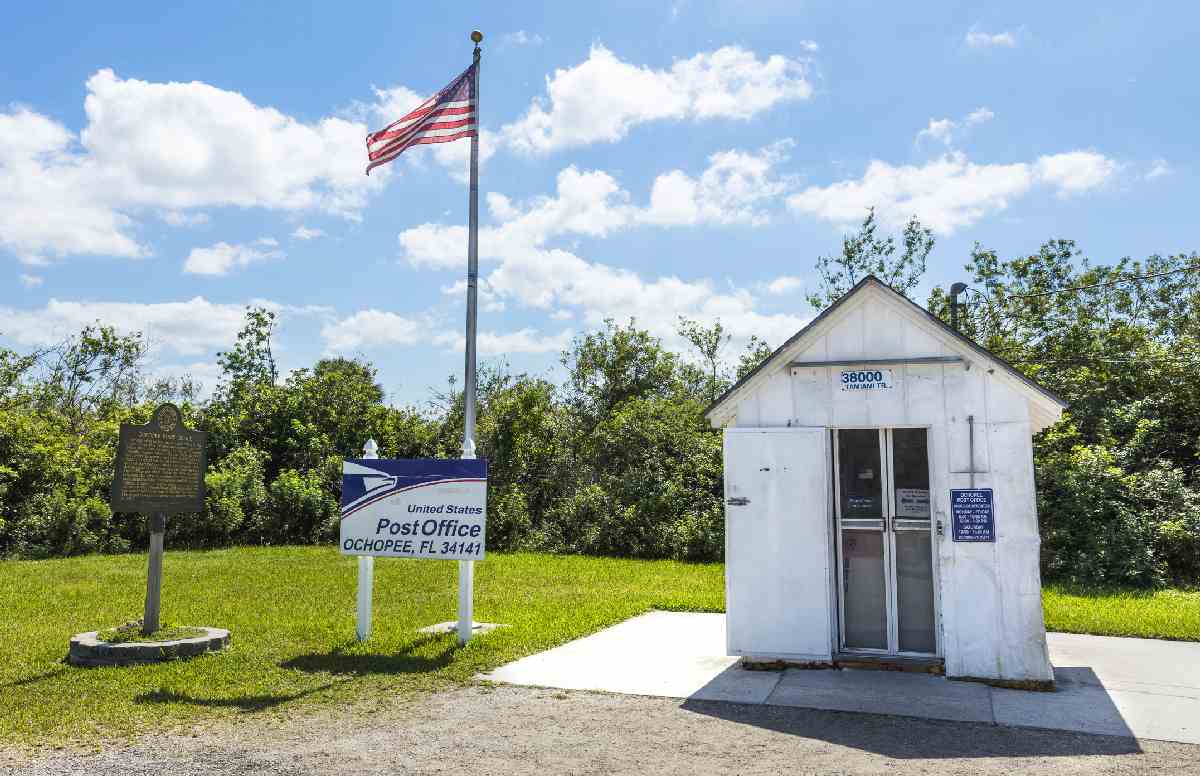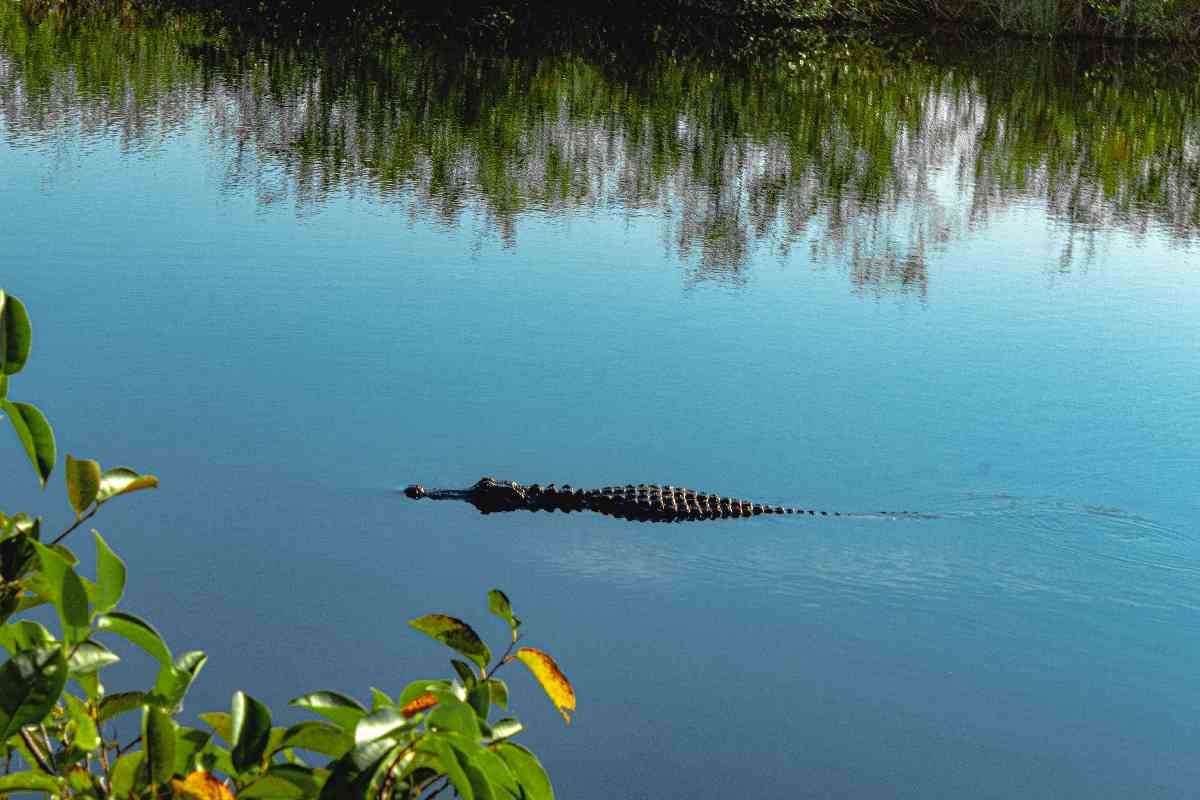Zuletzt aktualisiert am 12. August 2022 von Alexander
The Everglades is a vast and unique ecosystem in southern Florida that is home to an array of plant and animal species. It is also home to the smallest post office in the United States.

The Ochopee Post Office is located in the Everglades and is only 8 feet 4 inches deep and 7 feet wide. The building was once used as a shed to store tools and tomatoes, but it has been transformed into a functioning post office with room for only a single clerk.
Mein neues Buch ist jetzt im Handel: Wunderschöne Florida Keys und Key West – Die schönsten Ausflugsziele, Orte & Sehenswürdigkeiten, die Du unbedingt entdecken solltest!
Entdecke die Florida Keys und Key West! Unterwegs zu den 32 schönsten Orten und Sehenswürdigkeiten
Zum Buch >> Das findest Du im Reiseführer Florida Keys:
- Die schönsten Ausflugsziele, Sehenswürdigkeiten & Orte in den Florida Keys mit Erlebnisberichten, die Lust auf das nächste Abenteuer machen
- Übersichtskarten mit allen Ausflugszielen
- QR-Codes zu allen Ausflugszielen mit mehr Infos zu Parkplätzen, Anfahrt, Karten und Übersichten
- Mehr als 161 Reisefotos für Deine Inspiration
- Entdecke die Florida Keys und Key West wie ein Local, mit all ihren Sehenswürdigkeiten und Highlights
- Infos zu Öffnungszeiten und Preisen
- Adressen mit Parkplätzen zur Anfahrt und Link (QR-Code) zur Navigation auf Google Maps
- Links (mit QR-Codes) zu Video-Guides für ausgesuchte Orte
Despite its small size, the post office has 40 P.O. boxes and serves 300 patrons who live in the middle of nowhere. The post office is open six days a week and has a carrier who delivers mail on a 170-mile route.
If you’re ever in southern Florida, be sure to stop by the Ochopee Post Office and see this unique piece of American history for yourself.
Tourist Attraction
The smallest post office in the nation is located in Ochopee, Florida. This post office is a tourist attraction because of its unique ZIP code (34141). Folks line up at the window to purchase postcards with this coveted ZIP code. Please be patient if you see a flustered postal clerk suddenly bolt through the door past you. They may just need a bathroom break. Or, it could mean that a snake just slithered across their feet!
If you go…
Ochopee Post Office
38000 Tamiami Trail E, Ochopee, FL 34141
(239) 695-2099
About The Everglades

The Everglades is a natural region of subtropical wetlands in the southern part of the U.S. state of Florida. It is the largest tropical wilderness in the United States.
The Everglades are home to a variety of plants and animals, including alligators, crocodiles, snakes, turtles, birds, and fish. The area is also popular with tourists who come to see the unique wildlife and scenery.

The Everglades are threatened by pollution and development. Efforts are underway to protect and restore this important ecosystem.
If you’re interested in learning more about the Everglades, read on for some essential information.
What is the Everglades?

The Everglades is a large subtropical wetland in the southern part of Florida. It covers an area of about 4,000 square miles (10,360 square kilometers).
The Everglades is sometimes called a river because it has a slow-moving water flow. The water comes from rainfall and from rivers that flow into the wetland.
The land in the Everglades is mostly flat. There are sawgrass marshes, tree islands, and sloughs (wetlands with deep water). Cypress swamp forests are found in some areas.
What is the climate like in the Everglades?
The climate in the Everglades is warm and humid. The average temperature is 77 degrees Fahrenheit (25 degrees Celsius). It can be as hot as 100 degrees Fahrenheit (38 degrees Celsius) in the summer and as cool as 50 degrees Fahrenheit (10 degrees Celsius) in the winter. Rainfall averages 60 inches (152 centimeters) per year.
What plants and animals live in the Everglades?
Alligators, crocodiles, snakes, turtles, fish, birds, and mammals all live in the Everglades. Some of the more common animals include white-tailed deer, raccoons, opossums, bobcats, otters, and rabbits.
The Everglades is home to many different kinds of plants, including cypress trees, mangroves, and sawgrass. Orchids, bromeliads, and other tropical plants grow in the wetland.
What is the history of the Everglades?
The Everglades has been inhabited by humans for thousands of years. The first people were Native Americans who lived in wigwams (small houses made of wood and animal skins). They hunted animals and gathered plants for food.
In the 1800s, settlers began draining the Everglades to create farmland. canals and levees were built to control the water flow. This changed the natural ecosystem of the wetland.
What threats does the Everglades face?
The Everglades is threatened by pollution and by development. Pollution comes from agriculture, sewage, and stormwater runoff. Development causes the destruction of natural habitats.
Efforts are being made to protect and restore the Everglades. The U.S. government has created national parks and nature reserves in the area. Scientists are working to clean up pollution and to reintroduce native plants and animals.
Conclusion
If you visit the Everglades, you can help protect this important ecosystem. Remember to stay on designated trails, avoid touching plants or animals, and pick up your trash. By respecting the wetland, you can help preserve it for future generations to enjoy.
